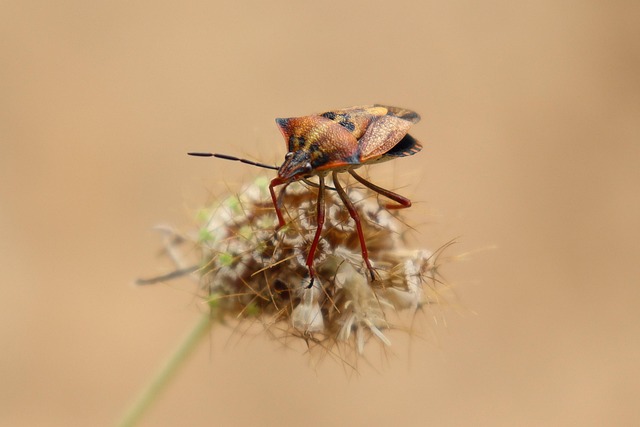Wood boring insects like beetles and termites pose significant risks to properties. Professional wood pest control services offer effective tailored solutions. While conventional chemical treatments have drawbacks, eco-friendly methods like natural repellents, heat treatment, and biological control are gaining popularity for minimal environmental impact. A multi-step approach combining approved treatments, regular inspections, barrier treatments, and proper maintenance is crucial for successful wood boring insect removal and wood boring beetle extermination. For residential wood pest treatment and commercial wood insect removal, eco-friendly pest control for wood boring insects offers durable protection without compromising sustainability.
Wood boring insects can cause significant damage to structures, from homes to commercial buildings. Traditional methods of control often rely on chemical pesticides with potential environmental and health impacts. This article explores eco-friendly alternatives for safe wood boring insect removal, focusing on understanding these pests and effective natural solutions. Learn about traditional vs. eco-friendly pest control methods and discover practical implementation tips for long-term protection against wood boring insects, both in residential and commercial settings.
Understanding Wood Boring Insects and Their Impact
Wood boring insects are a common yet detrimental issue for both residential and commercial properties. These pests include beetles, termites, and other wood-feeding organisms that can cause significant structural damage over time. They penetrate wood, creating intricate tunnels and galleries as they feed, which not only weakens the material but also facilitates their spread to new areas. The impact of unchecked wood boring insect infestations can be severe, leading to costly repairs or even building instability.
Professional wood pest control services offer effective solutions for wood boring insects removal. Eco-friendly methods, such as using natural repellents and heat treatment, are becoming increasingly popular as they minimize the use of harmful chemicals. Commercial wood insect removal techniques often involve targeted applications of safe pesticides, while residential wood pest treatments may include monitoring traps and barrier treatments to prevent reinfestation. Choosing the right approach depends on the specific insect, the extent of the infestation, and the property type—all considerations that professional wood pest control experts can address effectively.
Traditional vs Eco-Friendly Pest Control Methods
In the battle against wood boring insects, traditional pest control methods often rely on toxic chemicals that can have detrimental effects on both the environment and human health. These chemical treatments may provide quick relief but they do not address the root cause of the infestation and can leave residual traces in the wood, posing potential risks for years to come. As awareness of ecological preservation grows, there is a growing demand for eco-friendly alternatives that offer effective wood boring insect removal without compromising sustainability.
Eco-friendly solutions for pest control for wood boring insects, particularly wood boring beetle extermination, take a more holistic approach. Professional services now employ methods such as biological control, trap and monitor systems, and heat treatment to target pests safely and effectively. These techniques not only reduce the use of harmful chemicals but also foster a healthier environment, making them ideal for both residential wood pest treatment and commercial wood insect removal. By choosing eco-friendly solutions, property owners and businesses can contribute to preserving ecosystems while enjoying durable protection against destructive wood boring insects.
Effective Eco-Friendly Solutions for Wood Boring Insect Removal
Effective Eco-Friendly Solutions for Wood Boring Insect Removal
When it comes to tackling wood boring insects, there are numerous eco-friendly options that offer a safe and sustainable approach to removal. Unlike traditional chemical pesticides, these solutions minimize environmental impact while effectively targeting pests like wood boring beetles. One popular method involves the use of natural repellents such as neem oil or essential oils from citrus plants, which can deter insects without leaving harmful residues.
For more severe infestations, biological control agents like nematodes or fungi can be deployed. These microscopic organisms specifically target and eliminate wood boring insects, breaking down their bodies and preventing further damage. Additionally, heat treatment is another eco-friendly option where heated air is used to raise the temperature of the infested wood, killing the insects and their eggs without damaging the structure itself. This method is particularly effective for commercial wood insect removal in industrial settings or residential wood pest treatment for older homes.
Implementation and Maintenance Tips for Long-Term Protection
Implementing eco-friendly solutions for wood boring insect removal requires a strategic approach to ensure long-term protection. After treating affected areas with approved, non-toxic methods such as essential oil blends or borate solutions, it’s crucial to maintain a proactive pest control regimen. Regular inspections are key; checking for signs of new infestations, like characteristic tunnels or shavings, allows for early intervention.
For residential properties, establishing a barrier treatment around the exterior can deter pests. In commercial settings, regular professional wood pest control services are beneficial. These experts can provide tailored solutions, combining eco-friendly practices with advanced techniques to eliminate existing insects and prevent future invasions. Maintaining proper ventilation, humidity levels, and wood integrity through regular maintenance further strengthens defenses against wood boring beetles and other insect pests.
In light of the above discussions on understanding and managing wood boring insects, it’s clear that transitioning to eco-friendly solutions for their removal is both feasible and beneficial. By adopting these natural methods, professionals can offer effective wood boring beetle extermination while minimizing environmental impact. Whether in residential or commercial settings, integrating these eco-conscious practices into routine wood pest control not only protects structures but also contributes to a greener future. Remember that consistent implementation and maintenance are key to ensuring long-term protection from these pests.
